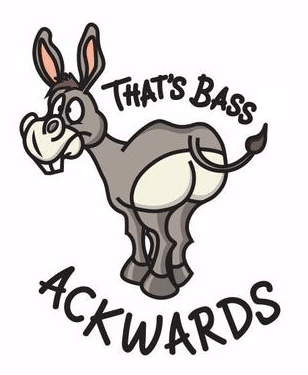 Most people think about targeting bass ackwards.
Most people think about targeting bass ackwards.
Yes, even advocates of — and self-styled experts in — targeting.
Because they think in terms of how they can ONLY reach their target customer.
How to not “waste” money showing their ads to anyone else.
And that’s odd, because not-speaking to non-targets isn’t the goal.
It’s the wrong way to think.
The Right Way to Think About Targeting
They should be thinking of how to reach the “right” customer as inexpensively and effectively as possible.
For example, let’s say that, through targeted media, I could reach 10 of my ideal, target customers for $10 a piece.
Or, I could reach 100 customers for $1 a piece, but only 20% of them would be my ideal customer and the rest would be, well, whoever — the masses, let us say.
If you had to choose between the two, it’d be a no-brainer, right?
The second option lets you reach twice as many ideal customers for the same money.
About Those “Other” Audience Members…
Plus, you get 80 other prospects of varying quality thrown in as a bonus. ‘Cause you never really know, right?
I mean is there really anyone you don’t want to know and respect your brand?
Are your ideal customers islands unto themselves, with no friends, colleagues, and family who might influence them as part of that other 80% of the audience?
Do you see the mistake of thinking in terms of exclusivity? Of being overly concerned about not reaching the wrong customer and ONLY speaking to the right customer?
Is Your Messaging as Targeted as Your Ads?
So let’s say we took the mass media buy where only 20% of the audience is an “ideal customer,” how do you think we’d ensure those members of the audience would be most likely to respond?
Easy, right? Messaging and offer.
We’d tailor the messaging in the ad to appeal to our ideal customer most powerfully, and use language that might even repel what might be called our “anti-customer.”
And if we were making a direct offer in our ad, we’d make sure the offer was most attractive to our ideal audience.
But is that how proponents of targeted ads behave?
Well, actual direct mail experts do this.
But quite a bit of the digital media guys don’t — or don’t do it nearly enough.
They often target the ads far more vigorously than they target the messaging and offer.
Plus they leave the messaging on the post-click landing page even less “targeted” than the messaging on the ads.
If you’ve wondered why all that targeting still leads to disappointing results, this is one reason why.
An Extreme Example as Case Study
So how far can you take the idea of “wasting” mass media reach in order to persuade your intended target?
And just how “targeted” can you get with your messaging?
Well, in the late 70s, one of the few geniuses of radio advertising bought several radio ads on a Detroit radio station during the morning drive in order to reach only one person.
 The Radio Association of Broadcasters came to Tony Schwartz to help them convince one of the Big Three auto manufacturers that radio was an effective advertising media for cars.
The Radio Association of Broadcasters came to Tony Schwartz to help them convince one of the Big Three auto manufacturers that radio was an effective advertising media for cars.
Apparently the CMO for this manufacturer was under the impression that cars sold better through “visual” media and was uninterested in radio advertising.
Tony found out which Detroit station the CMO for that manufacturer listened to, bought a morning drive schedule on that station, then wrote the most persuasive ad possible, pitched directly to that one executive.
And it worked.
The ad talked about how uniquely persuasive it was to talk to people about cars and driving while they were in a car and actively driving, which made a lot of sense to that CMO.
Better yet, not only did the radio stations land an advertising account with that one manufacturer, but other manufacturers and auto-industry marketers also heard the ad and bought advertising, despite not being the intended target.
In fact, the “bonus business” was as lucrative as the targeted account!
In all, Tony Schwartz spent low five figures in advertising to reach one guy — but garnered millions of dollars in new accounts.
But in order to do that he had to be willing to “reach” hundreds of thousands of people who weren’t his intended target.
He had to be shockingly inefficient in terms of the bass-ackwards way most people understand targeting.
Fortunately for him and his clients, he was an honest consultant and practitioner when it came to advertising, and not a sales weasels posing as an “ninja / guru / expert / specialist”
Tired of dealing with sales weasels for marketing? Honest consulting is only an e-mail away.
P.S. When calculating mass media’s ability to reach the “right” customer, make sure you look at your campaign’s impact over time.
- Getting a Foot in the Door — Of Perception - November 27, 2025
- What Digital Superstars Know About Offline Advertising - November 17, 2025
- Unmistakable: A Tale of Two Boots and Branding Done Right - November 8, 2025

